- Home
- international
- news
- Inside the world of California's fire-reducing goats, a quirky but popular weapon against California's wildfire epidemic
Inside the world of California's fire-reducing goats, a quirky but popular weapon against California's wildfire epidemic
James Pasley

- With California's wildfires expected to worsen in coming years, the state is looking at different ways to prevent fires.
- There are the usual methods like fire retardant and controlled burning — and then there are goats.
They're called nature's lawnmowers for a reason.
Goats are hungry, agile, and far from picky. Across California, herds of goats are being used to prevent wildfires — alongside more traditional forms of fire prevention.
Goats are carbon-friendly, prefer weeds to native plants, and can get up steep hills that humans and machines can't get to.
Here's how goats are working to prevent California's fires.
Every year, wildfires rage across California. Less than 25 years ago, in 1999, 273,000 acres burned in California. This was considered a bad season back then, but as the population in the state has grown and moved deeper into wildfire territories, it's only gotten worse.

Source: Smithsonian Magazine
In 2021, more than 2 million acres of wilderness in California burned. Last year was declared "unexpectedly quiet" when 362,000 acres burned — this is still almost 100,000 acres more than in 1999.

Overall, California is having larger and more intense fires and experts warn it's only going to get worse.
Sources: National Geographic, New York Times
To combat the fires, there are the traditional methods like spraying fire retardant. In 2020 and 2021, the Forest Service used about 50 million gallons of the substance.
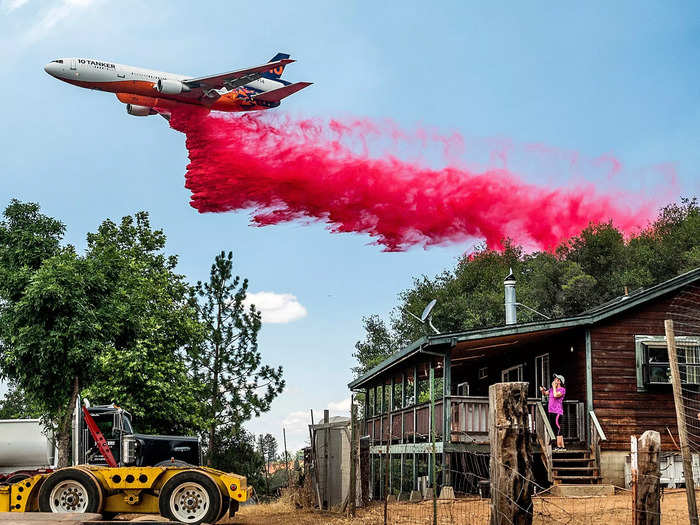
It's not just a reactive measure either, but one that can be sprayed before the fire season and can last for months if there's no heavy rain.
Sources: Los Angeles Times, King5
There's also a need for residents and the government to work out which homes and communities have become too risky to remain where they are.
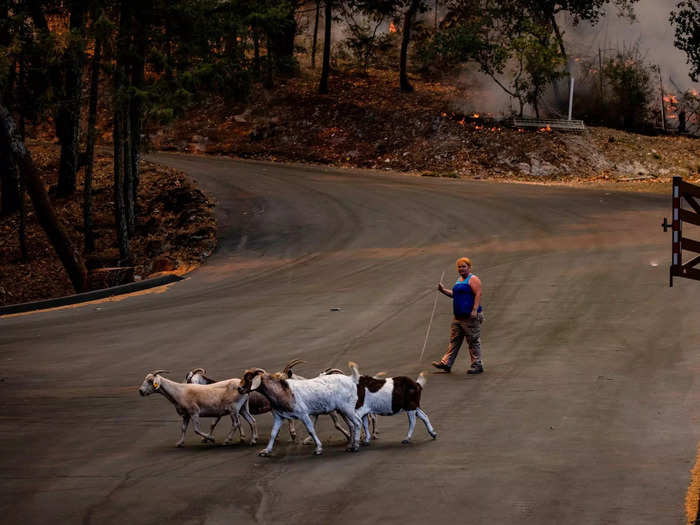
Source: Stanford News
That's where the goats come in.
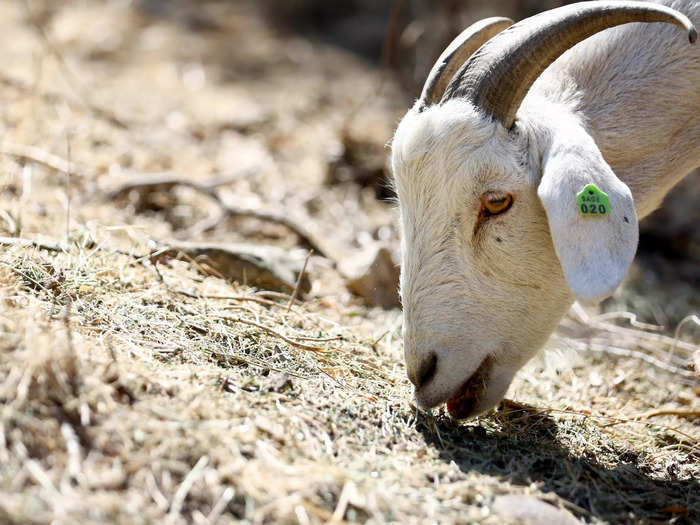
Sources: National Geographic, NPR
Goats have become a mainstay for fire prevention. It takes about 100 goats to graze over an acre in a day. They thin down plant coverage, making it harder for fires to spread.

Sources: National Geographic, NPR
They're quieter than lawn mowers and gentler on the environment than pesticides.
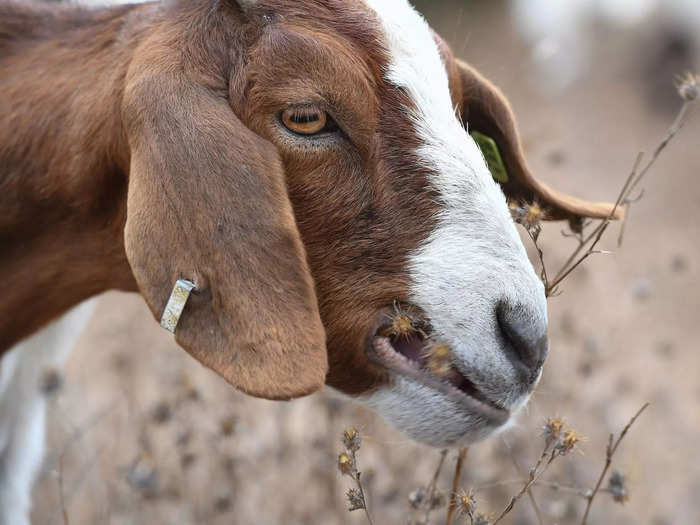
Sources: National Geographic, NPR
They've also become increasingly useful as invasive weeds flourish. The National Park Service calls these weeds "LA's Evil Plants" because they grow and dry out quickly, increasing the risk of fires due to how easily they burn.
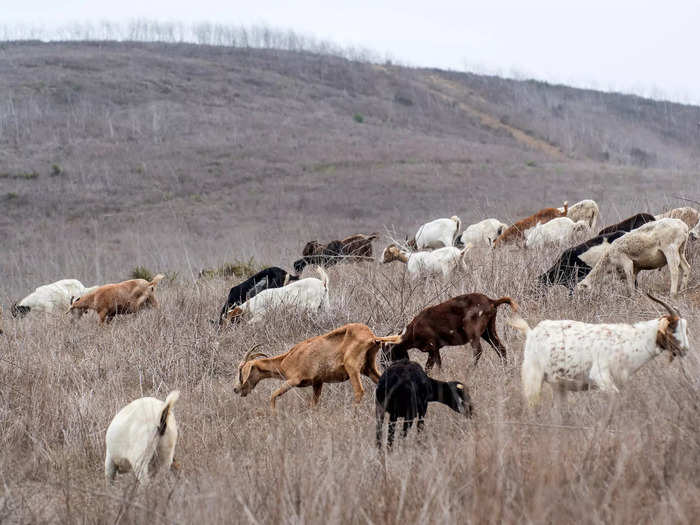
"If you throw a bunch of matches into a forest, some small percentage of them might actually start a fire, but if you throw a bunch of matches into a big hay pile, there's a good chance that many of those will catch fire," Bethany Bradley, an environmental conservation professor at University of Massachusetts Amherst, told NPR.
Sources: National Geographic, NPR, NBC Los Angeles
Goats have a secret, fire-fighting weapon — their hunger. Their metabolism is unusually high, according to City Grazing executive director Genevieve Church.
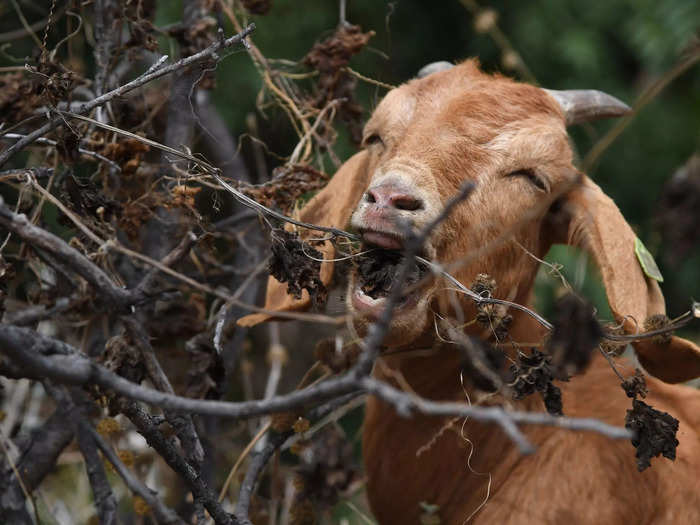
Sources: National Geographic, San Francisco Gate
They can also climb up steep hills that are otherwise difficult for humans or machines to reach.
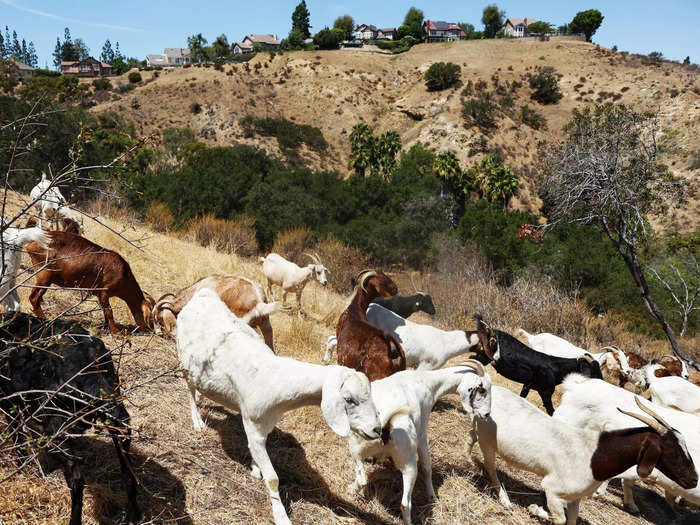
Source: San Francisco Standard
They're happy to eat invasive plants like ivy and blackberries. And in general, they're not picky eaters.
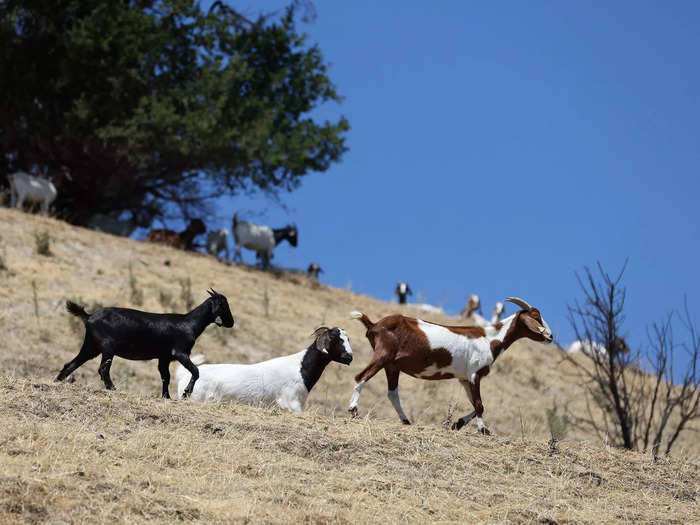
Source: CNN
Brea McGrew, who had a herd of goats working across Oakland, Berkeley, Monterey, and Malibu since as early as 1991, told the Smithsonian Magazine: "They like their food right at eye level. At home, the goats ignore the wonderful green grass and look longingly at the scruffy taller stuff beyond the fence."
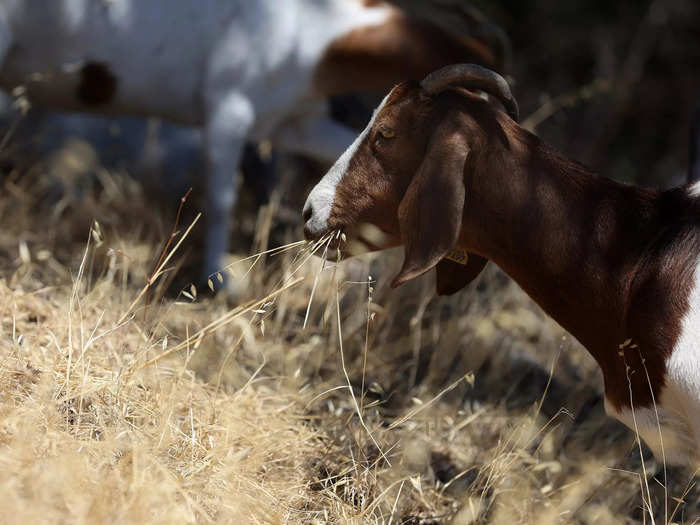
Source: Smithsonian Magazine
And if something looks particularly tasty, they're willing to work for it. McGrew said they worked together, with one goat getting onto its hind legs to get a branch down so that others could have a good chew.
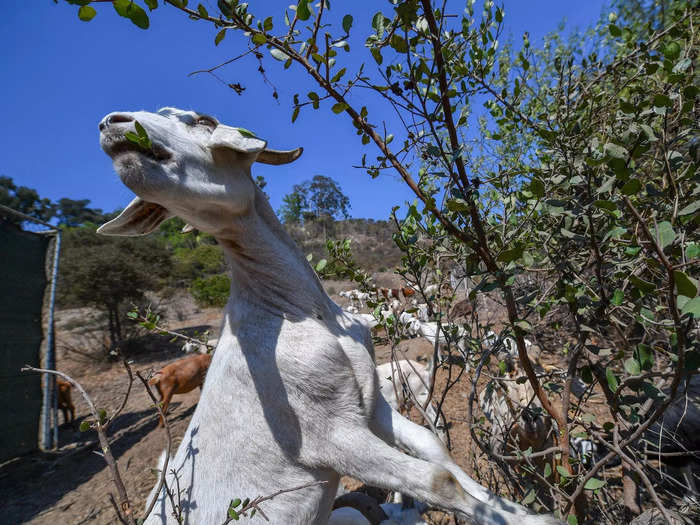
Goats are also carbon-friendly. The only thing they leave behind are their droppings, which serves as a good fertilizer.
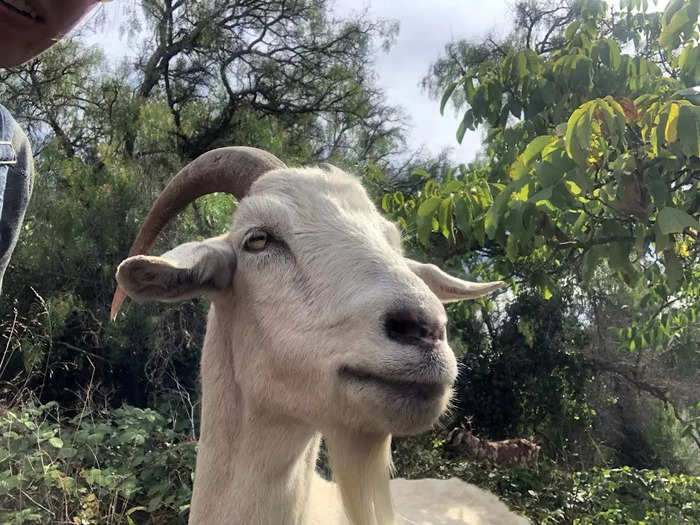
Source: San Francisco Standard
What's even better is that after a goat eats an invasive plant, the seed goes through its digestive tract. When it is excreted, the seed can't grow again.
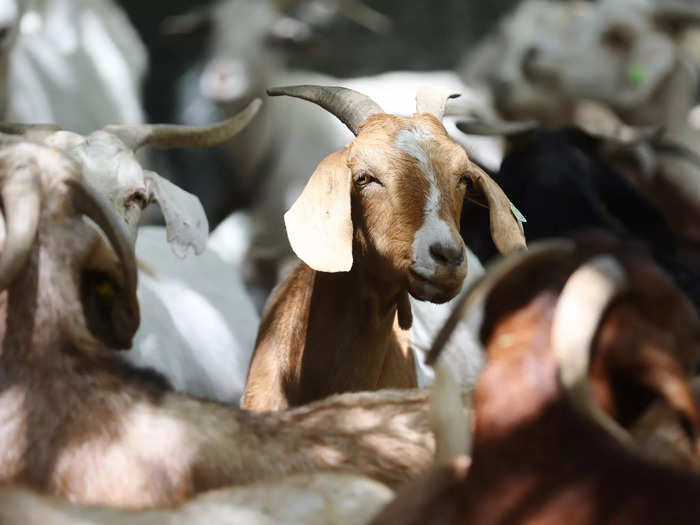
Source: National Geographic
But goats aren't exactly a new innovation to fire prevention efforts. Laguna Beach was using a herd of 400 to keep the bush down back in 1993.
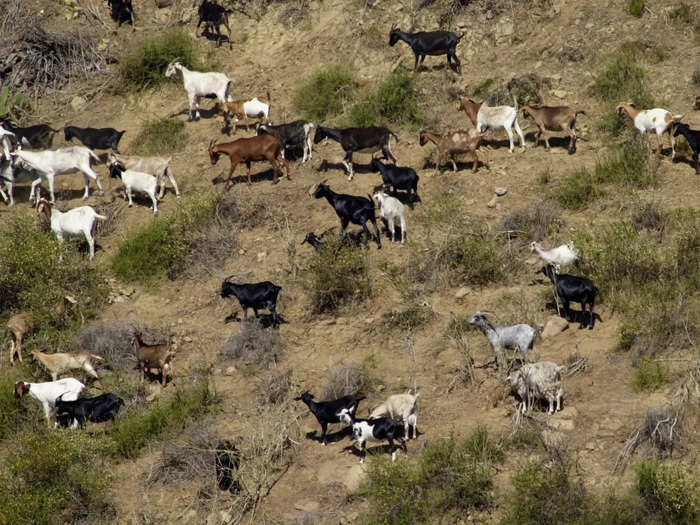
Source: Los Angeles Times
And Redwood City was using a whole lot of them in 2002.
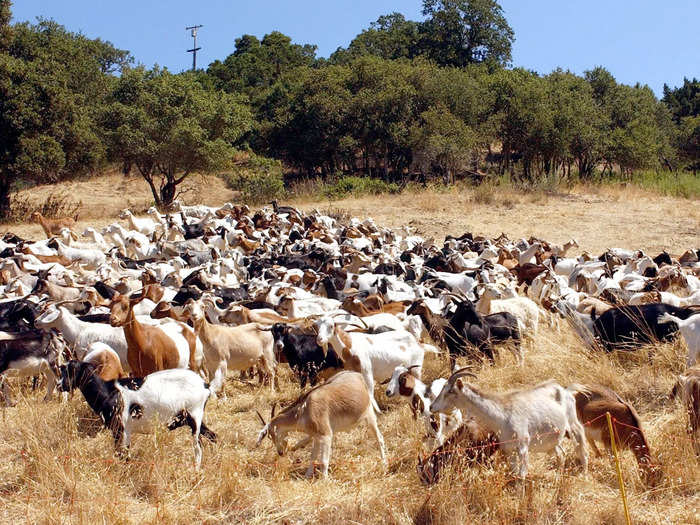
Herds of fire-reducing goats have chewed bush right across California, including in San Francisco, Sacramento, Irvine, Pasadena, Anaheim, and Napa Valley.
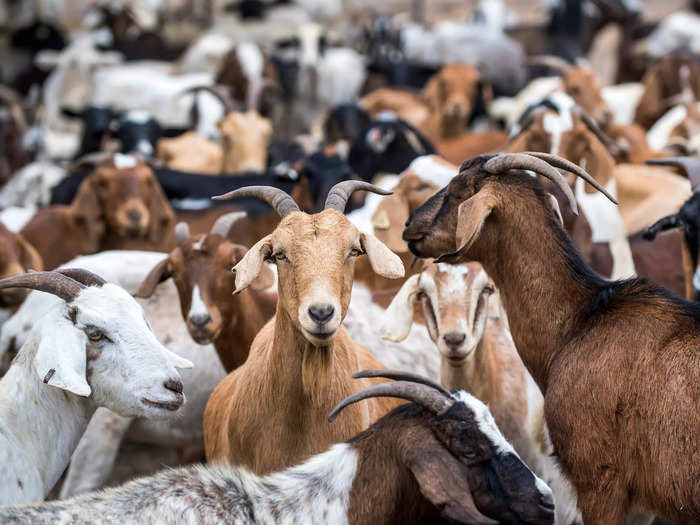
But according to the San Francisco Examiner, the use of goats represents a shift in California's long-term fire management strategy, which used to leave large sections of grassland and forest untouched.
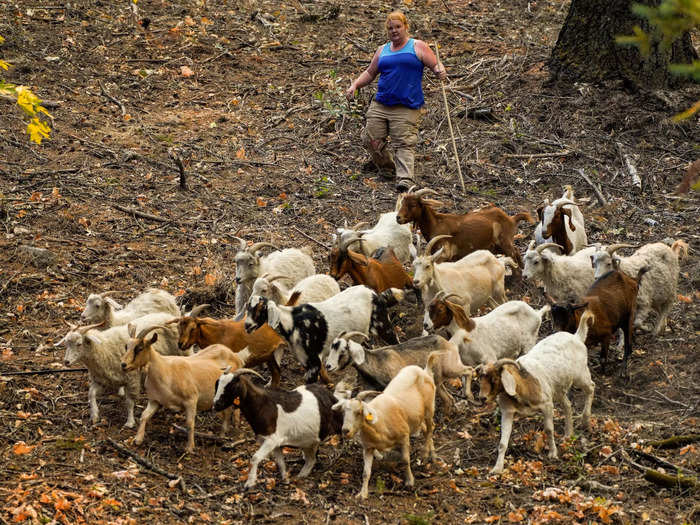
Source: San Francisco Examiner
They often have great names, too, like Smaug, who is part of the herd used by City Grazing in San Francisco.

Source: San Francisco Examiner
And this one with an impressive beard is Bitsy.
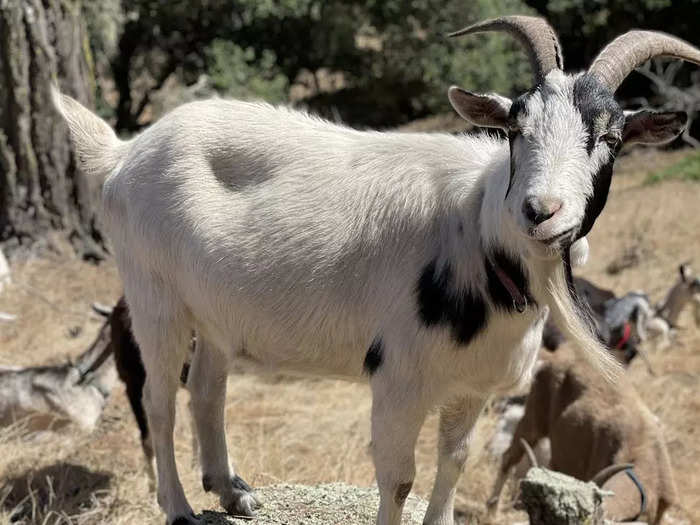
This is Ickarus standing alone on a dreary day.
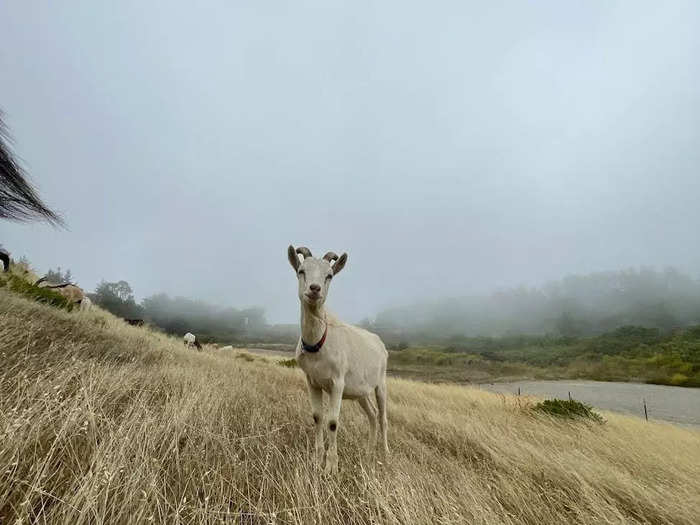
And here’s Curry looking pretty pleased with themselves.
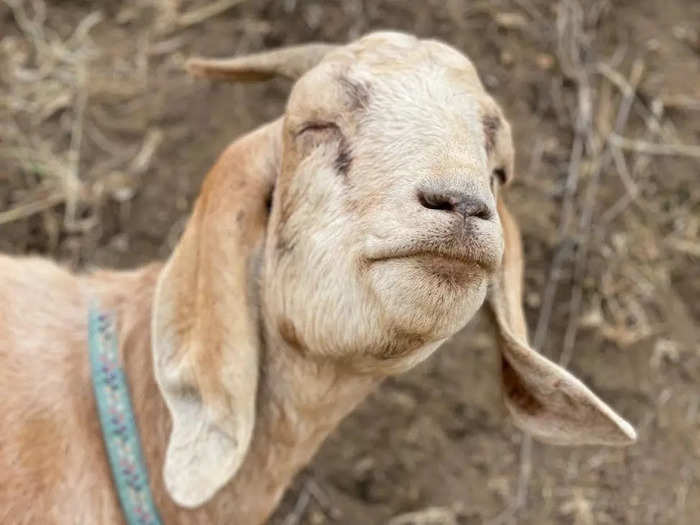
"They all have names," Church told CNN. "Most of them know their names, too, but they don't necessarily come when you call. Because they're goats."
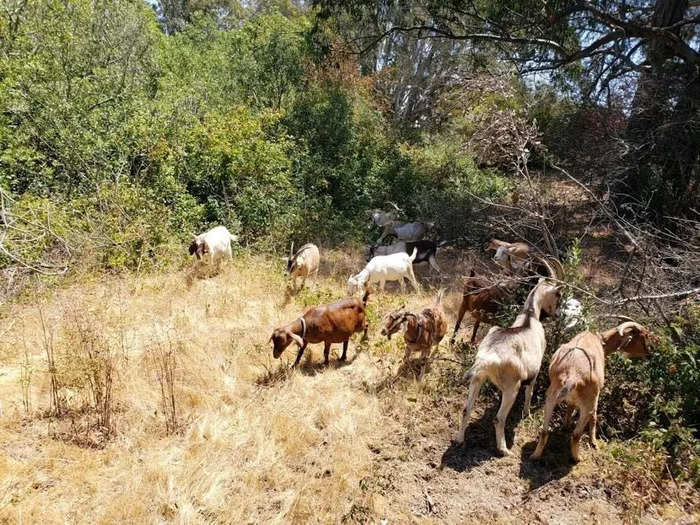
Source: CNN
For all of their qualities and their great names, goats alone are not the answer.
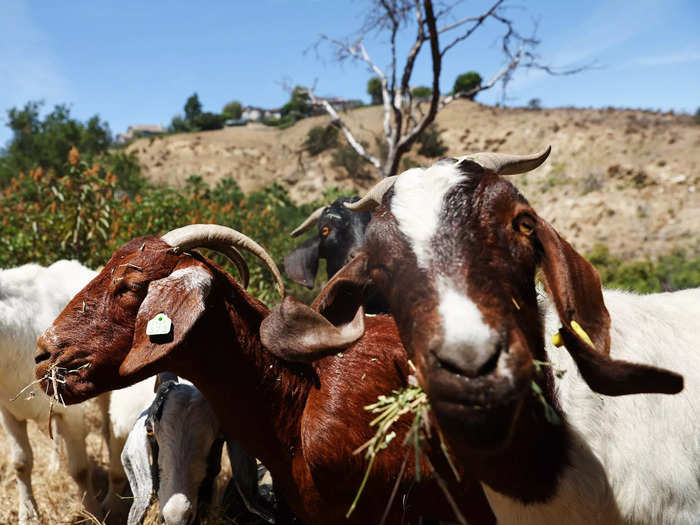
"In terms of managing fuel loads, mowing is probably just as effective as grazing except on steep or rocky terrain," Robert Freese, program manager at the Irvine Ranch Conservatory, told National Geographic.
Source: National Geographic
They can also be expensive compared to hiring weed trimmers — except when the grazing is done on a massive scale.
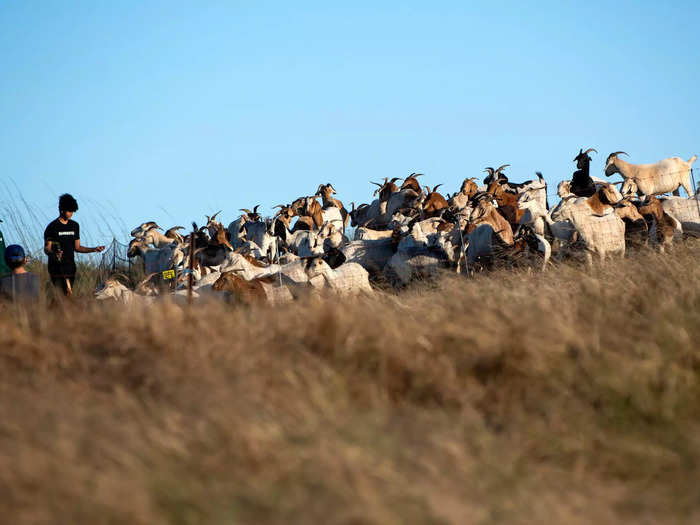
Sources: San Francisco Chronicle, National Geographic
And they're not machines. Goats, like Curry here, need rest.
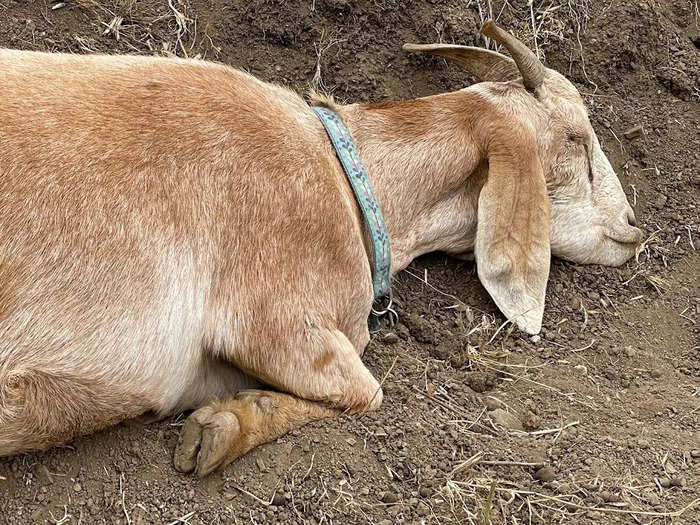
While goat grazing used to be done seasonally, with increasingly bad fire seasons, demand has gone up.
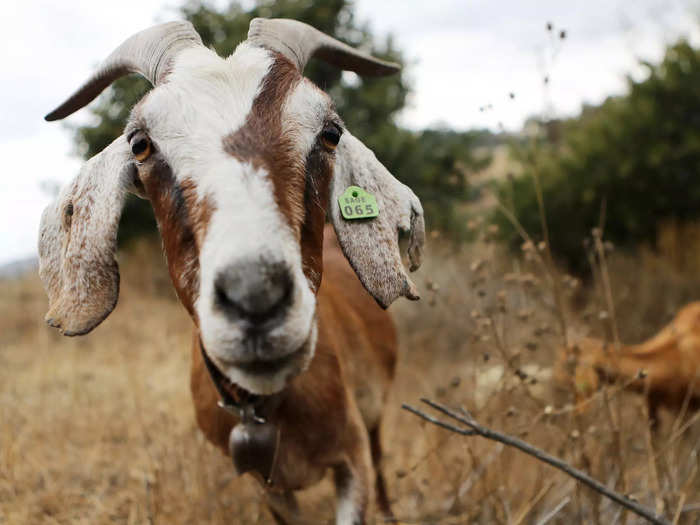
Sources: San Francisco Examiner, Fox26 News
But goat herders are facing another issue — costs. Last year, a new law changed overtime rates for goat herders. It ensures that herders are paid 168 hours per week, because they are on-call 24 hours a day, seven days a week. This meant wages for sheepherders basically doubled.
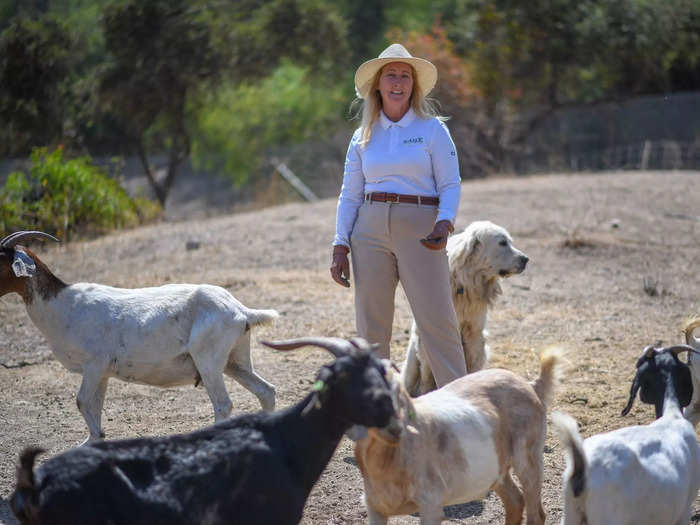
Sources: Fox26 News, San Francisco Chronicle
As Freese told National Geographic, the best way to prevent fires involves a number of methods, including controlled burning, herbicides, and manually clearing brush.
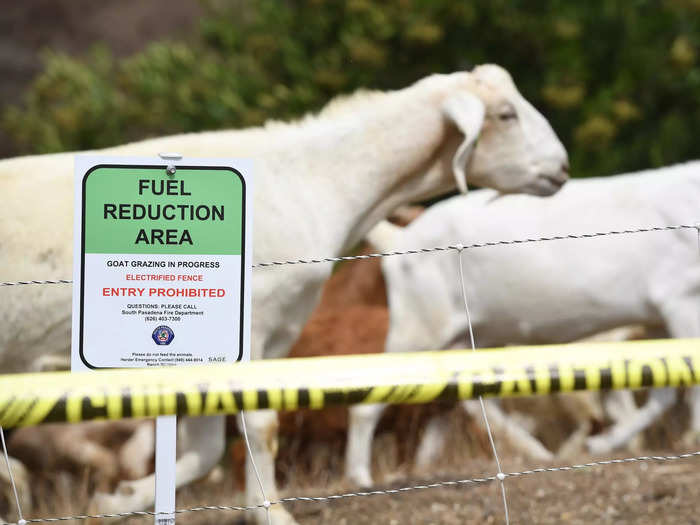
Source: National Geographic
Goats are just one of the methods, although undoubtedly they're the most memorable method. As Steward Andree Soares, who owns grazing company Star Creek Land, told the San Francisco Examiner: "Once people see it, they can't unsee it."
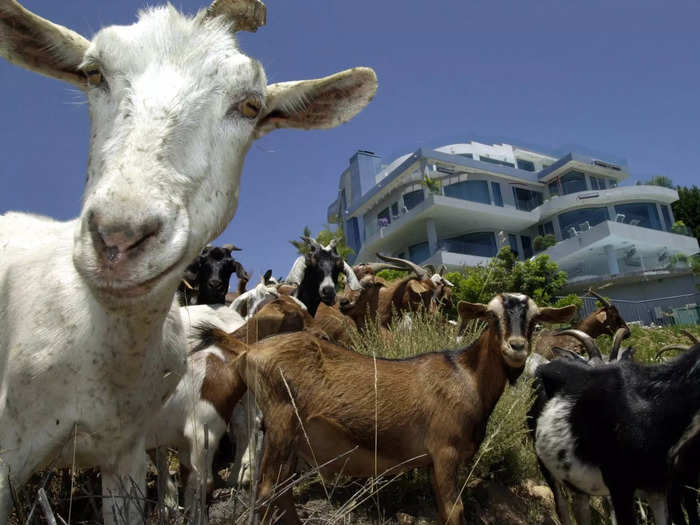
Source: San Francisco Examiner
Popular Right Now
Popular Keywords
Advertisement